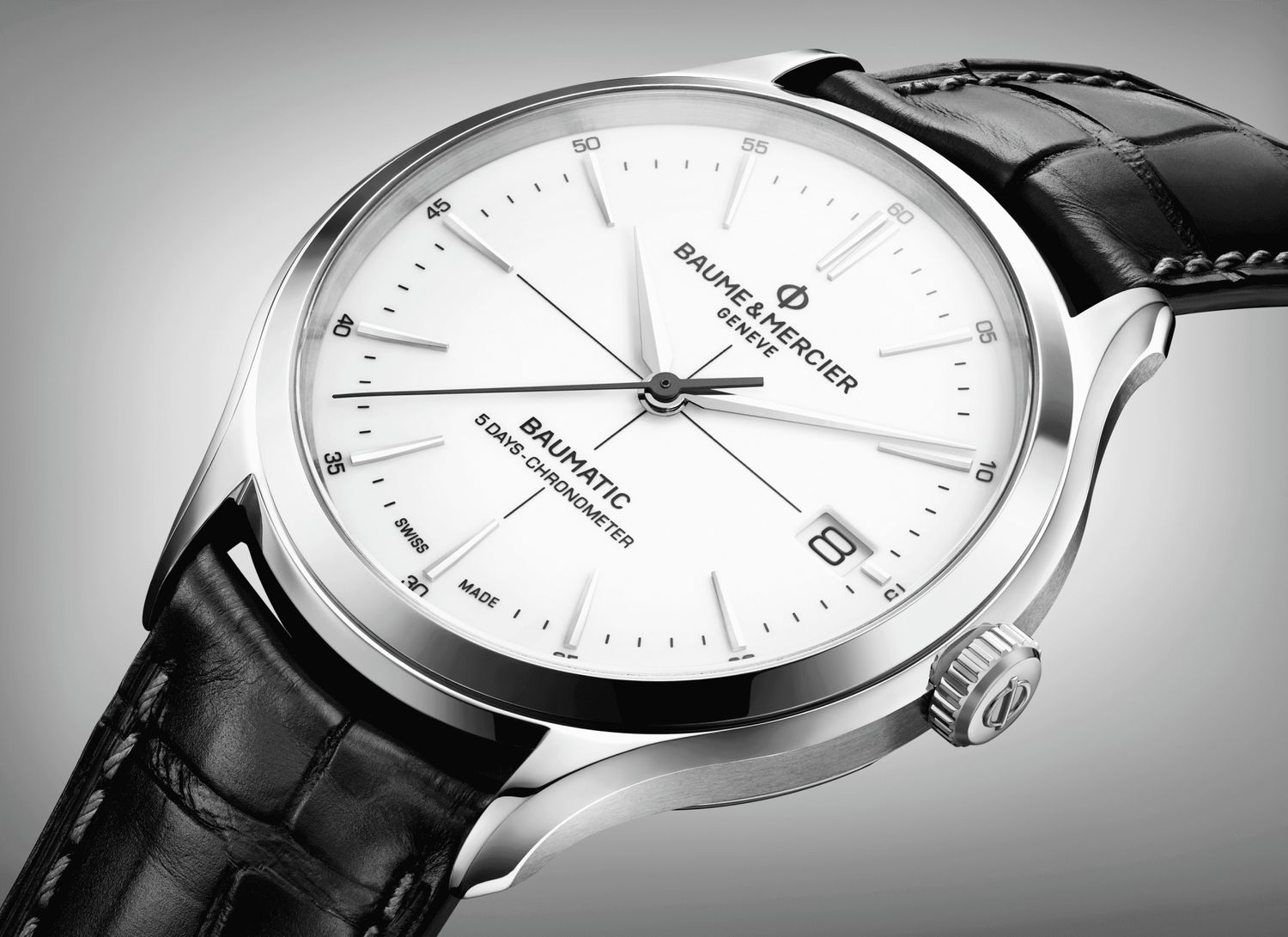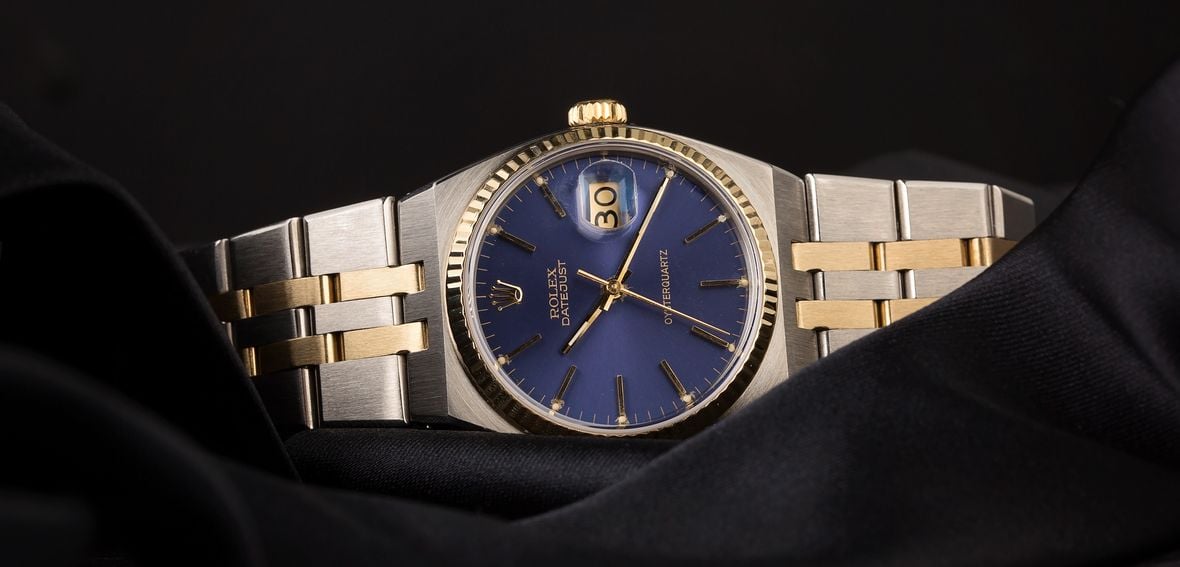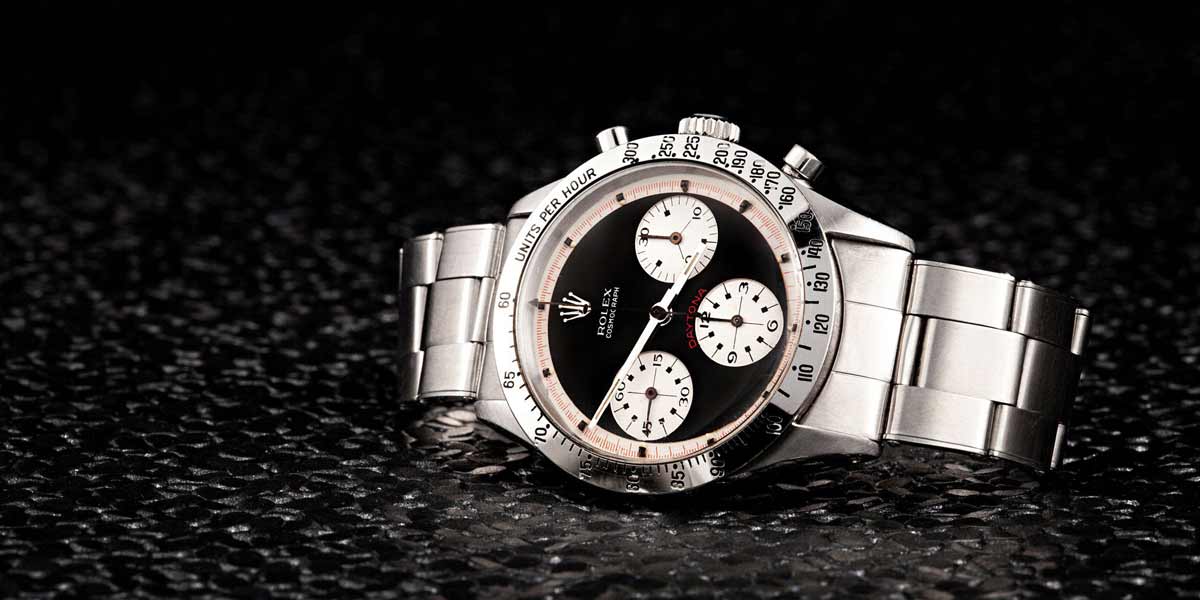While things like tourbillons and moonphase indicators are certainly nice to look at, in the real world, a dual time zone function will always be one of the most useful watch complications you can have. That ability to know the time in two places at once is invaluable for busy travelers, and in the right hands, can also be wrapped up in a stylish and versatile package.
Many of the top luxury timepiece manufacturers produce at least one dual time or GMT model – Rolex currently has 3 multi-time zone watches in their catalog: the Rolex GMT-Master II, Explorer II, and Sky-Dweller. If you were wondering what the difference between the two is; a dual time zone watch will display two different times simultaneously, the second usually on a sub-dial with a 12-hour scale, along with some kind of AM/PM indicator. A GMT uses a 24-hour display, commonly found running around the outside of the dial or bezel, with an extra central hour hand geared for 24-hours pointing out the secondary time zone. Depending on the type (specifically those with a rotatable bezel and a GMT hand independent of the main hour hand), these can also be used to keep track of a third time zone. There are iconic examples of both varieties, and below we have picked out a few of our favorites.

Rolex Sky-Dweller
Yes, you’re right. If we are going to talk about Rolex in the context of the ultimate traveler’s watch, the obvious choice is the GMT-Master. However, while the Sky-Dweller has never had the same universal renown (which can be said about nearly every other watch ever made), it is a staggeringly impressive dual time achievement, particularly for a manufacturer that only rarely ventures into the world of complications.

First released in 2012, it is the most recent all-original addition to the brand’s portfolio. On its debut, the aesthetics certainly divided opinions, but they seem to be maturing as time goes on, and even those who still can’t get onboard with the unusual appearance tend to appreciate the efficiency of the design. There is a great deal of information being displayed – in addition to its dual time zone display, the Sky-Dweller is also the first annual calendar Rolex has ever produced. It would have been all too easy to make the watch practically illegible trying to cram it all in, but some ingenious engineering has prevented it.
It is the off-centered GMT disc, decapitating the lower hour markers, which is the most common cause for hesitation over the Sky-Dweller’s looks, and is something Rolex appears to have tried to combat in their latest generation of the watch. Whereas older models were available with the disc set in a contrasting color to the rest of the dial, the newest iterations all have discs that are painted the same shade as the face, blending in and becoming a much less distracting element. Now, it takes a second glance to distinguish a Sky-Dweller from a Datejust, and there is absolutely nothing wrong with that.

Key to all the functionality is Rolex’s own Ring Command Bezel, a feature first introduced on the Yacht-Master II and even further refined here. The bezel on the Rolex Sky-Dweller works in three positions, each one unlocking a different operation, which are all controlled through the crown. It means the date, local time and reference time can be set without the need for additional pushers that would have ruined the profile of the brand’s definitive luxury travel companion.
Coupled with that is the elegantly simple annual calendar display, involving just a small colored-in aperture above each hour marker to coincide with the month of the year (e.g. a blocked out window above seven o’clock tells us it’s July). It is all beautifully thought out and executed, and the introduction of a trio of stainless steel models (albeit with white gold bezels) has brought the Sky-Dweller’s dual time zone functionality within reach of a wider audience’s budget. Destined to be a future classic? Who knows? But it remains a wonderfully capable performer.
Breitling Navitimer 1 B04 Chronograph GMT 48
There is a case for calling Breitling’s Navitimer – first released in 1952 on the back of the Chronomat’s success, the world’s first Smart watch. Before the idea of wearable tech was more than a mere futuristic flight of fancy straight out of a Dick Tracy comic book, the Navitimer was making the lives of actual flyers that bit easier.
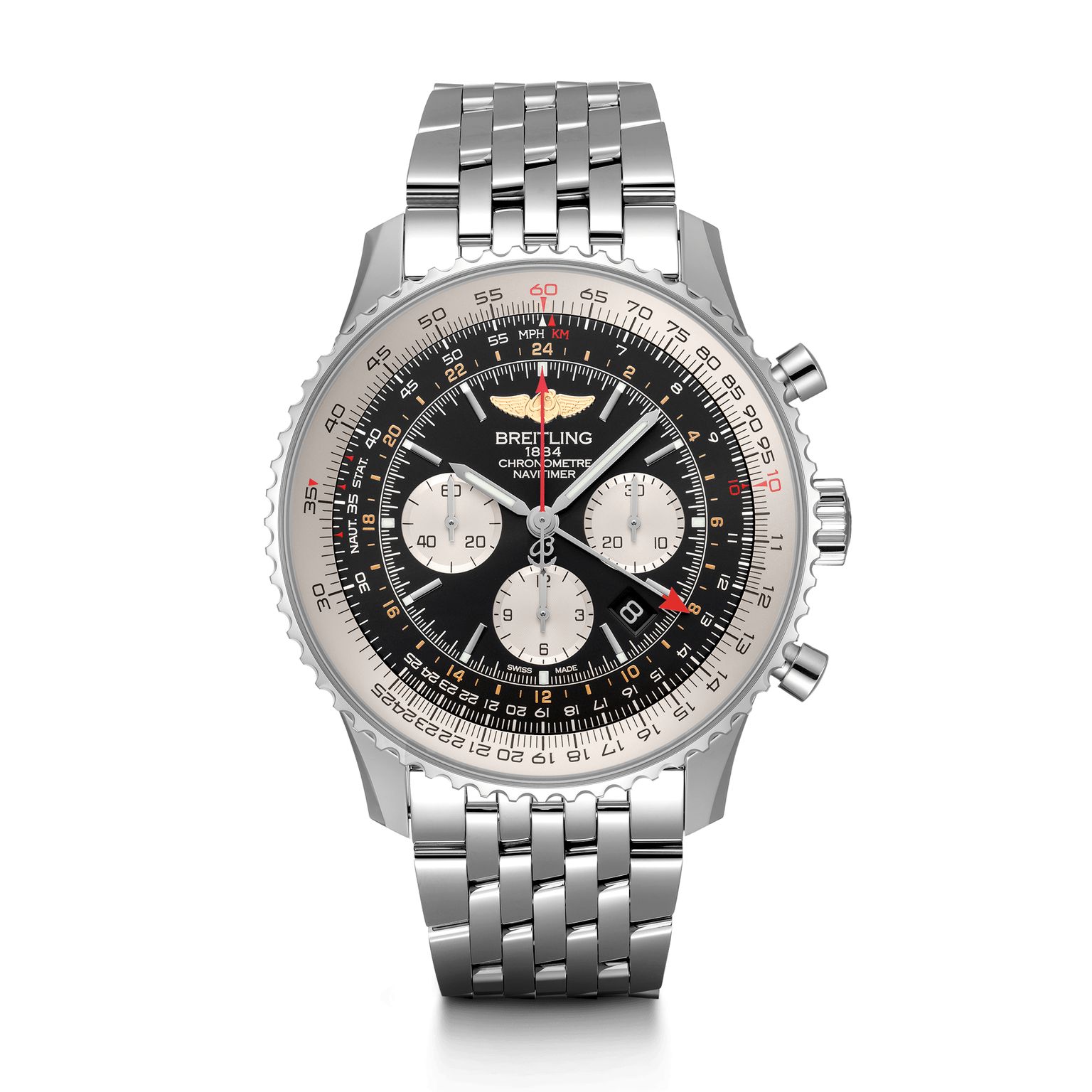
The chronograph with its trademark circular slide rule could be used by pilots to determine a host of different aviation-based calculations, including such critical information as fuel consumption and time and distance reckoning.It was that kind of real-world utility that saw the Navitimer adopted as the official timepiece of AOPA – the Aircraft Owners’ and Pilots’ Association. Although its party piece has long been superseded by the unfathomable computing power of the average flight deck, it remains one of the first choice pieces for both professionals as well as those with a love of all things airborne.
The Navitimer 1 B04 Chronograph GMT 48 was launched in 2014, one of a small herd of watches released at the same time, including a series of 46mm non-GMT examples. As the name suggests, the dual time zone piece weighs in at a hefty 48mm, following Breitling’s tradition of building goliath-size watches, which are all the better to read at a glance in the confines of a cockpit.
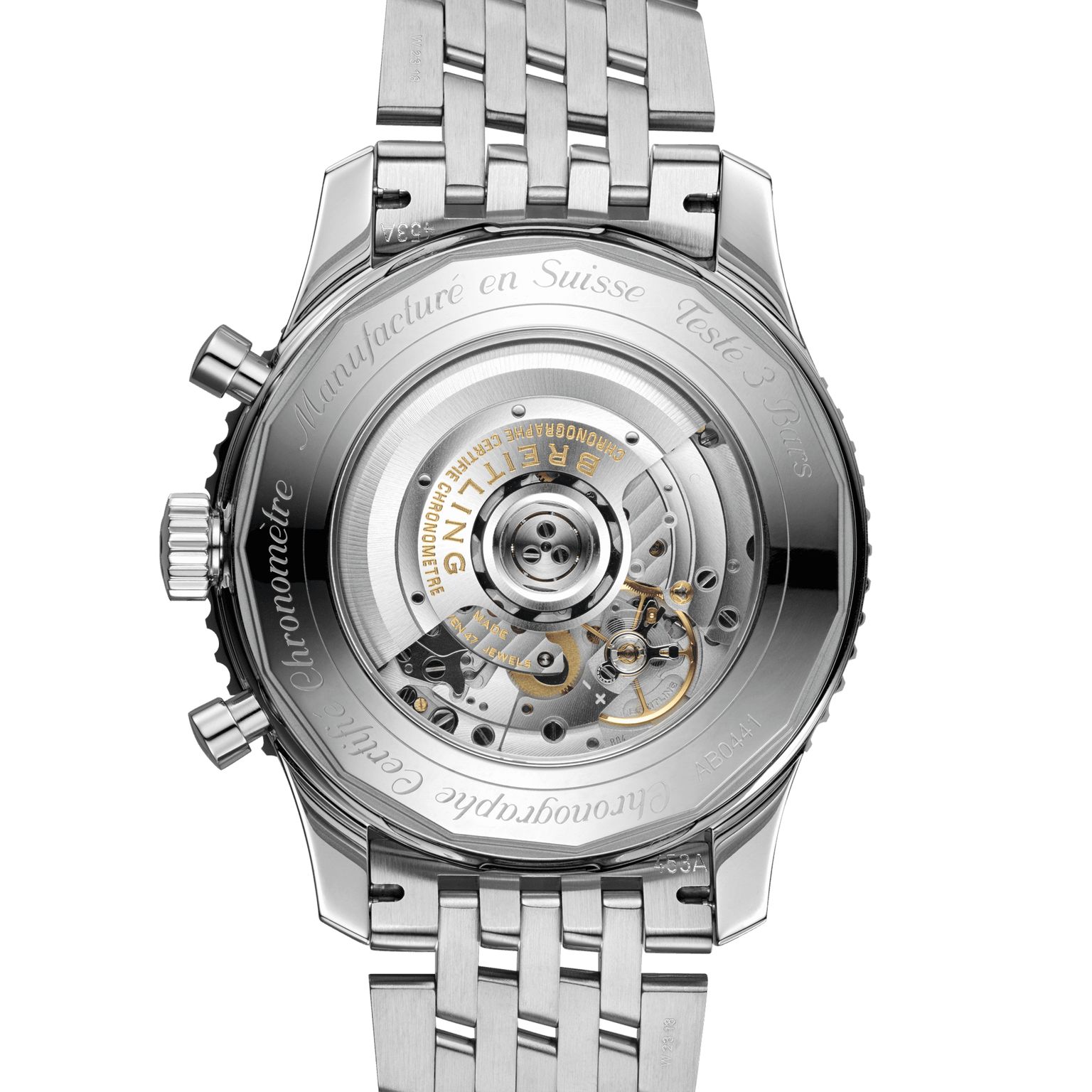
The dimensions also help to keep the dial at least relatively readable, spreading out the elements as much as possible, although it will never be what you would describe as minimalist. After cramming in the slide rule, the tachymeter, a date aperture, and a tri-compax layout of sub-dials for the chronograph, adding in a GMT scale on the inner circumference hardly makes a difference to the legibility. It follows the iconic, and unique, look of the Navitimer, an aesthetic recognizable at once as being from Breitling, and one universally adored. Inside, the in-house Caliber B04 is essentially an offshoot of the brand’s first homegrown movement, the B01, with a GMT module bolted on. Beating at 4Hz, it holds a 70-hour reserve and, best of all, is visible through a sapphire caseback.
Like the vast majority of mechanical stalwarts of another age, these days the Breitling Navitimer is far less likely to be worn as a tool and will instead be bought by those looking to make a statement. The slide rule is now a distinctive design feature rather than an implement of flight safety, but it doesn’t matter. As the oldest chronograph still in production, it has earned its place in any self-respecting fan’s collection, and is a piece of both horology and aviation history.
Patek Philippe Calatrava Pilot Travel Time
When is a Patek not a Patek? In 2015, when the first Calatrava Pilot Travel Time, the 5524G, was issued, it looked so un-Patek that it caused something of a meltdown among devotees. It appeared to be inspired by the ‘hour angle’ watch the brand developed in the 30s, a model used by aviators of the era in conjunction with a sextant and radio signal to determine their longitude and latitude in much the same way as a ship’s navigator.
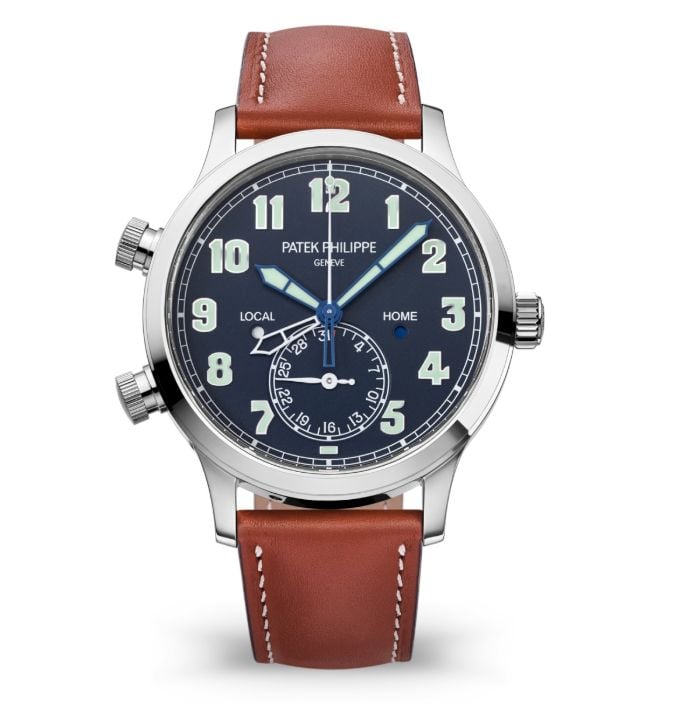
It was the fact that Patek Philippe had once built pilot’s watches that took many by surprise, a little slice of their story that was relatively unknown. The 2015 model is forged in white gold with a dark blue grained dial and, three years later, it was joined by a rose gold version, the 5524R, similarly mirror polished, with a warm chocolate-color face.
At 42mm, both are conspicuously sizable for the Patek norm, although quite average for aviator’s watches. The main hands, large and edged in blue, along with the oversized Gothic-style hour markers, all bear the hallmarks of that initial hour angle piece, while the rest follows a more classic visual. The skeletonized GMT hand revolves around the central axis, pointing out the second time zone, and the date is displayed on a broad sub-dial at six o’clock. Flanking it on either side are two tiny round apertures that indicate whether it is night or day at your destination.
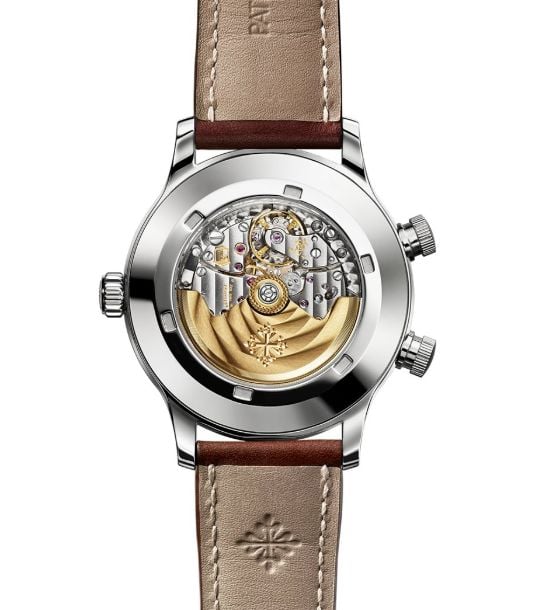
Driving it all is the manufacture caliber CH 324 S C FUS, a 28,800vph self-winding engine with a 45-hour reserve that boasts Patek’s own Gyromax balance wheel and Spiromax spring. A display back lets you appreciate the incredible finishing on the bridges and plates, while the Patek Philippe seal sits on the 21k gold rotor, the brand’s own declaration of excellence since it broke from the Poinçon de Genève, or Geneva Hallmark, in 2013.
Functionality is simple and beautifully intuitive, with the two mushroom style pushers on the left of the case adjusting the second time zone; the lower button advancing the GMT hand, the upper one backing it. Both are secured with a quarter turn to prevent accidental changes. Unseen, a small pusher on the bottom of the case allows the wearer to set the date.
With the release of the rose gold example in 2018, the Calatrava Pilot Travel Time became more in-keeping with Patek’s traditional sublime elegance, the white gold model just too jarring for an unsuspecting faithful. These days, both are accepted for what they are; unusual yet highly impressive and strikingly handsome travel watches. At just shy of $50,000, they are by no means cheap, but as a luxurious sidekick on your next voyage, they are likely to be able to take some beating.

BONUS: Rolex Explorer II
The Rolex GMT-Master II gets the majority of the attention when it comes to Rolex’s multi-time zone sports watches; however the movement inside the Explorer II offers the same independently adjustable hour hand as the GMT-Master II, enabling the Rolex Explorer II to simultaneously display a secondary time zone. Since the Explorer II does not have the same rotating 24-hour bezel on the GMT-Master II, it is only able to display two time zones (rather than 3); however that is just as many as the Rolex Sky-Dweller.
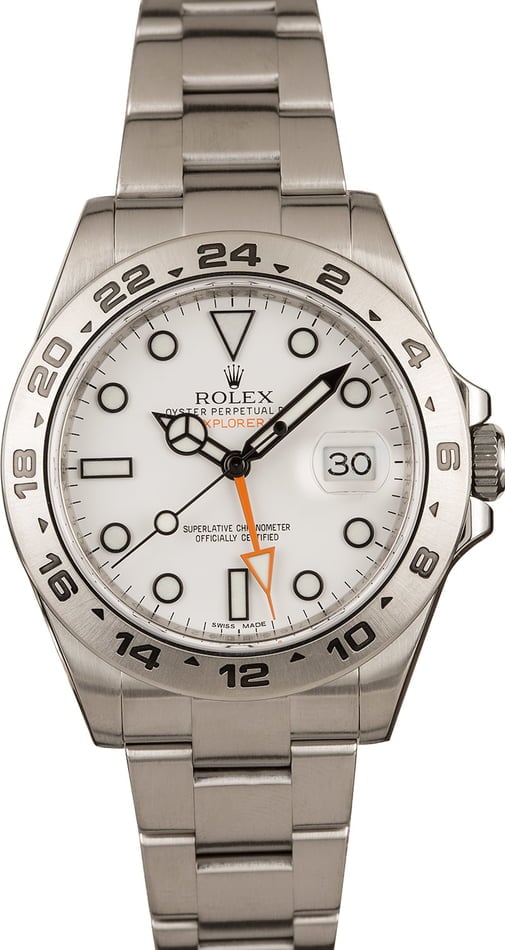
With the exception of the reference 1655 – the very first Explorer II reference where the 12-hour and 24-hour hands were linked together, all Rolex Explorer II watches have independently adjustable hour hands and are capable of displaying two time zones. While the movement used to power the Explorer II has evolved over the years, the core functionality has remained unchanged, and ever since the 1980s, the Rolex Explorer II has been a dual time wristwatch.
The current version of the Rolex Explorer II is the 42mm reference 216570, which brings back the bright orange 24-hour hand of the original reference, but uses the modern Cal. 3187 movement to retain the Explorer II collection’s dual time functionality. As was the case with the previous generation of Rolex Explorer II watches, the current 42mm ref. 216570 is available with either a black or white “Polar” dial; however on this latest generation the ‘Explorer II’ name appears in bright orange to match the 24-hour hand.



